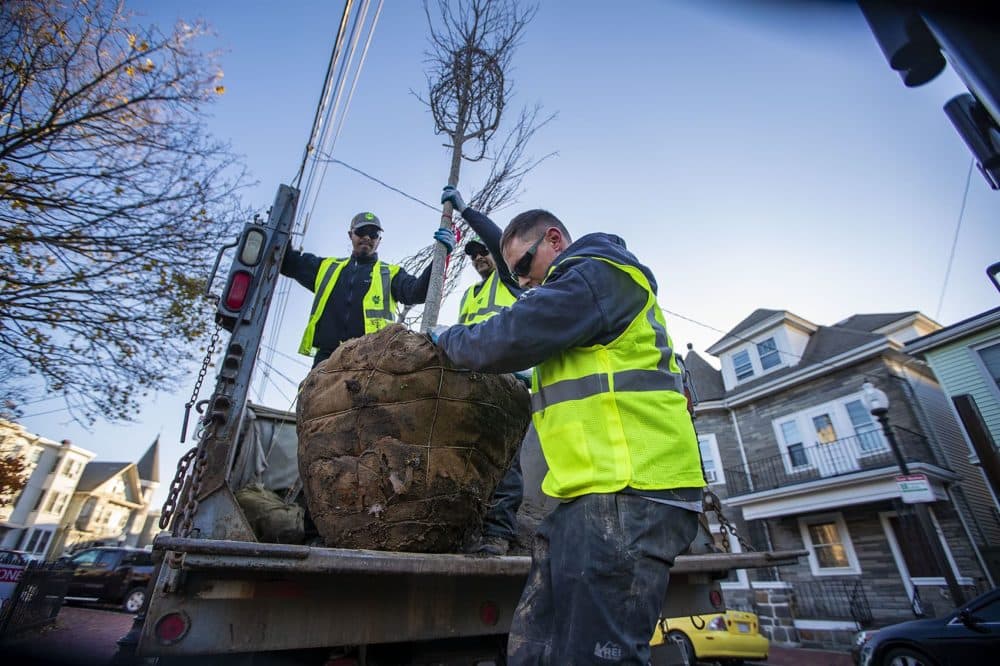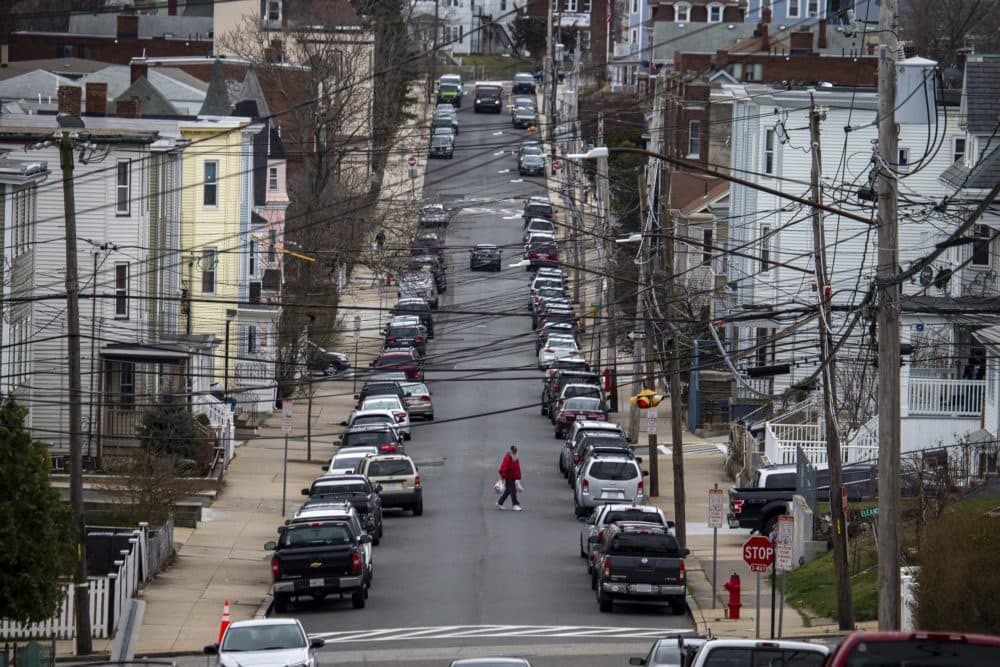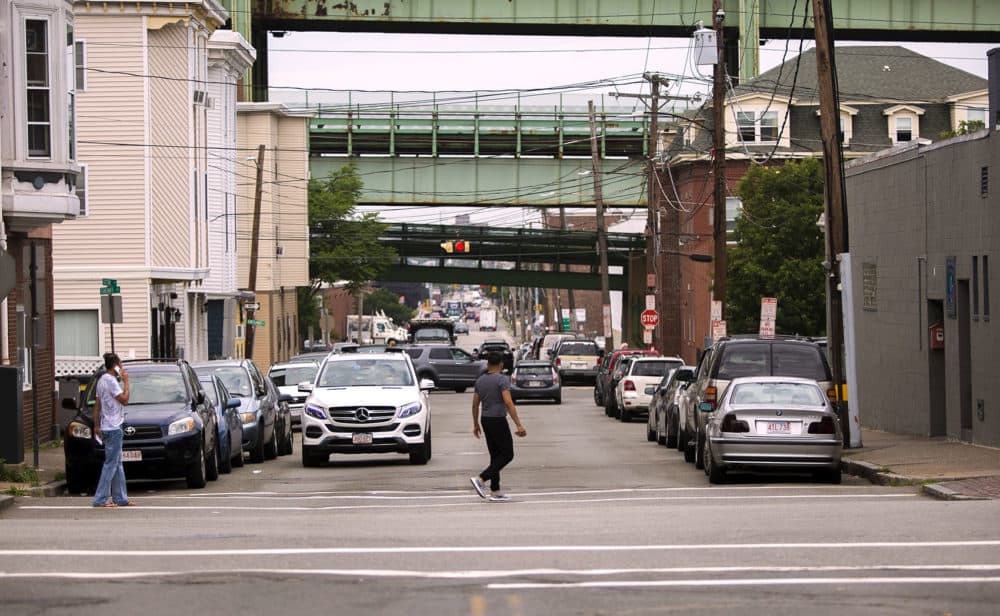Advertisement
Dead And Dying Trees Have More Methane In Their Soil, Study Finds

Of all the troubled trees in Chelsea, there's one that's taken root in Roseann Bongiovanni's mind.
"If I remember correctly, it was on Bellingham Hill," Bongiovanni says. "They would plant this street tree, care for it, the city would go and water it, and then maybe a year later they would see that it died."
This happened over and over, says Bongiovanni, the executive director of GreenRoots, an environmental justice non-profit in Chelsea. "This tree would die no mater what the city did," she recalls. "So after seeing a tree die in the same place multiple times, we started to think, 'OK, what's going on here?'"
Bongiovanni suspected that gas leaks were playing a role, not just with that tree, but with many dead and dying trees across the city. And trees matter in Chelsea, a densely populated city with the highest rate of COVID-19 infection in the state, where urban heat effects and air pollution compromise the health of residents.
"We're a community that believes heavily in having more street trees," Bongiovanni says. "There are so many different reasons why street trees are really important."
Street trees cool sidewalks, absorb pollution, and offset greenhouse gas emissions.
"I can tell you what it feels like to walk down a tree-lined street in the summer and then walk down a street that had no trees," says Madeleine Scammell, a Chelsea resident and professor of environmental health at Boston University School of Public Health. "That's the case here in Chelsea. A lot of the streets where there are just no trees, it is so much hotter."

Scammell says that many people have long suspected that natural gas leaks harm trees, but there's been little proof.
"When cities and towns have wanted to hold the utilities accountable for the death of trees, that's where there seems to be a lack of evidence," she says.
And we're not talking chump change, says Scammell: Chelsea spends about $50,000 each year to remove trees, and about $500 to replant each new one.
So Scammell set out to find some evidence. Her team measured concentrations of methane — the main component of natural gas — in the soil around street trees in Chelsea, examining 84 dead or dying trees, and 97 healthy ones. (A professional arborist classified the trees, says Scammell, because she says she's "not a tree person.")
They found that the sick trees were 30 times more likely to have detectable methane in the soil around their roots, compared with the healthy trees. And, says Scammell, there was more methane in the soil they measured closest to the street.
Advertisement
"So that lends some evidence to the idea that it’s the street leaks of the natural gas distribution system that are permeating the tree cuts," Scammell says.
The research was published in the journal Environmental Pollution.

Massachusetts has one of the oldest gas pipeline networks in the country, and more than 11% of it is made from leak-prone materials like cast iron and bare steel.
"We have pipes under our streets and sidewalks in Greater Boston that are more than 100 years old," says Nathan Phillips, a professor of earth and environment at Boston University who has mapped gas leaks throughout the area. "They're failing, they're leaking, and the leaks range in size from small to gigantic."
Scammell says her researchers had to call the state Department of Public Utilities three times while they were collecting data to report hazardous leaks.
"Natural gas presents a lot of harm to human health at all parts of the system from extraction to distribution in our homes, and we've just identified a hazard to the environment in one part of that system," she says. "This infrastructure that we take for granted, that's really an essential part of public health and human health, needs attention."
This article was originally published on June 05, 2020.
